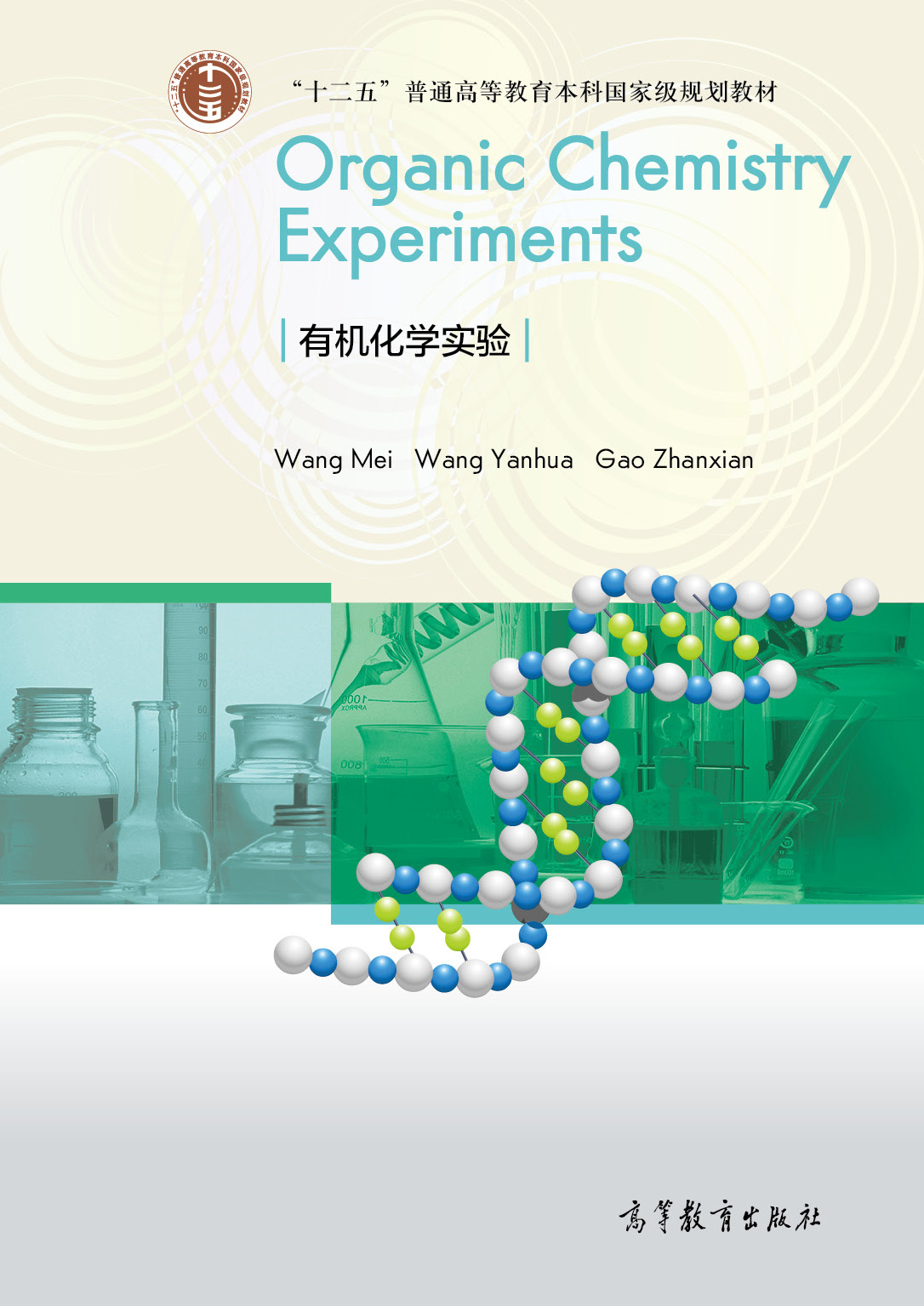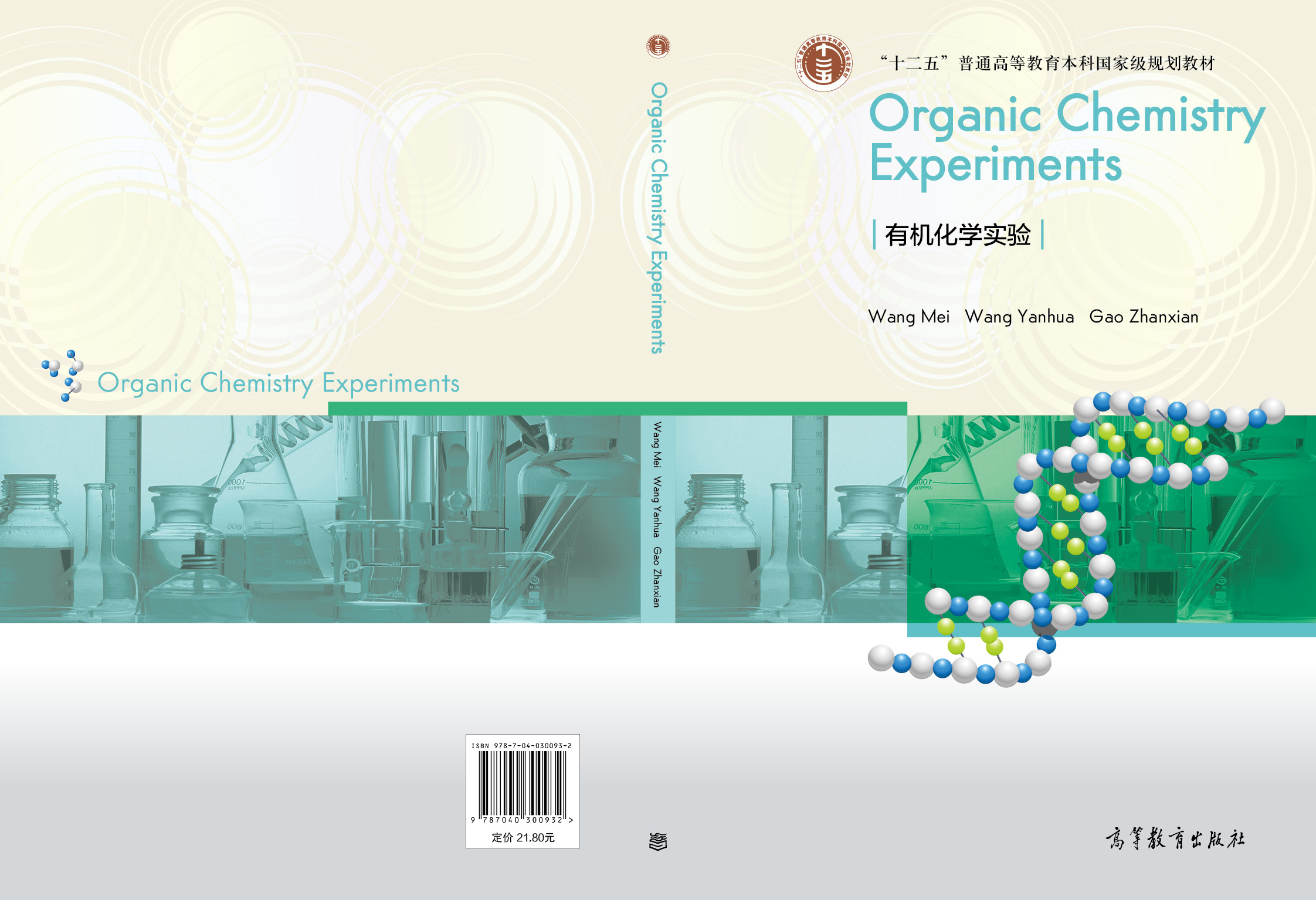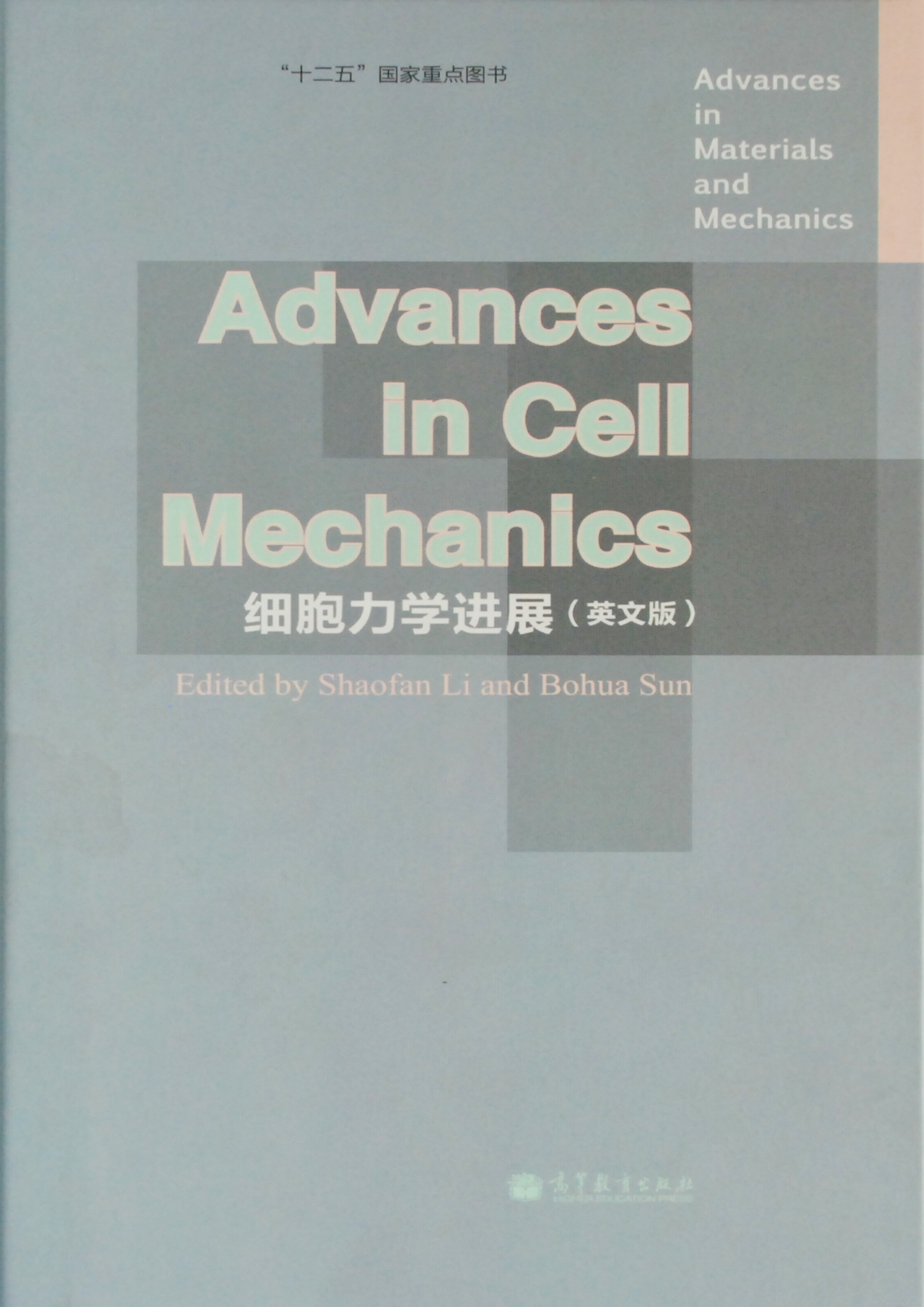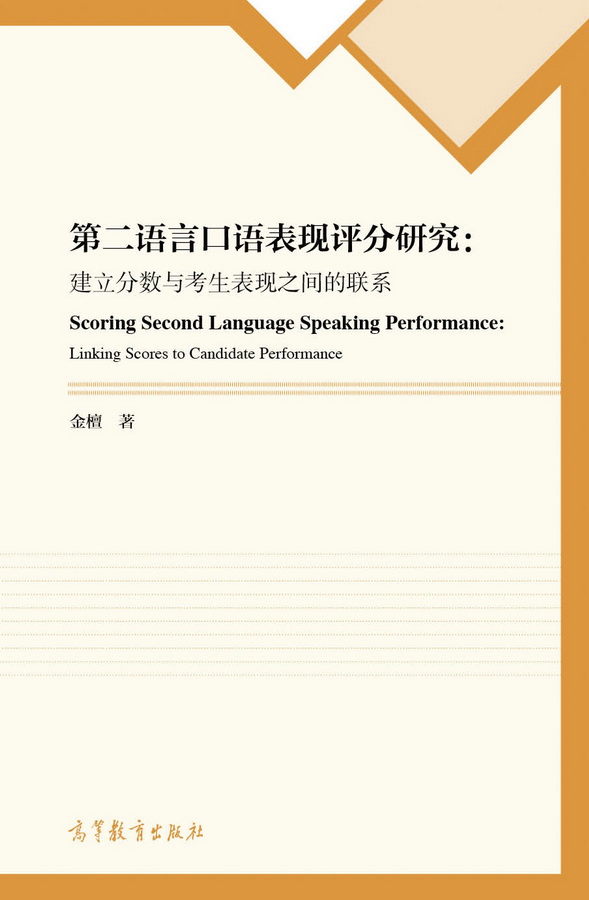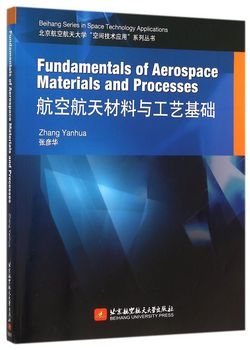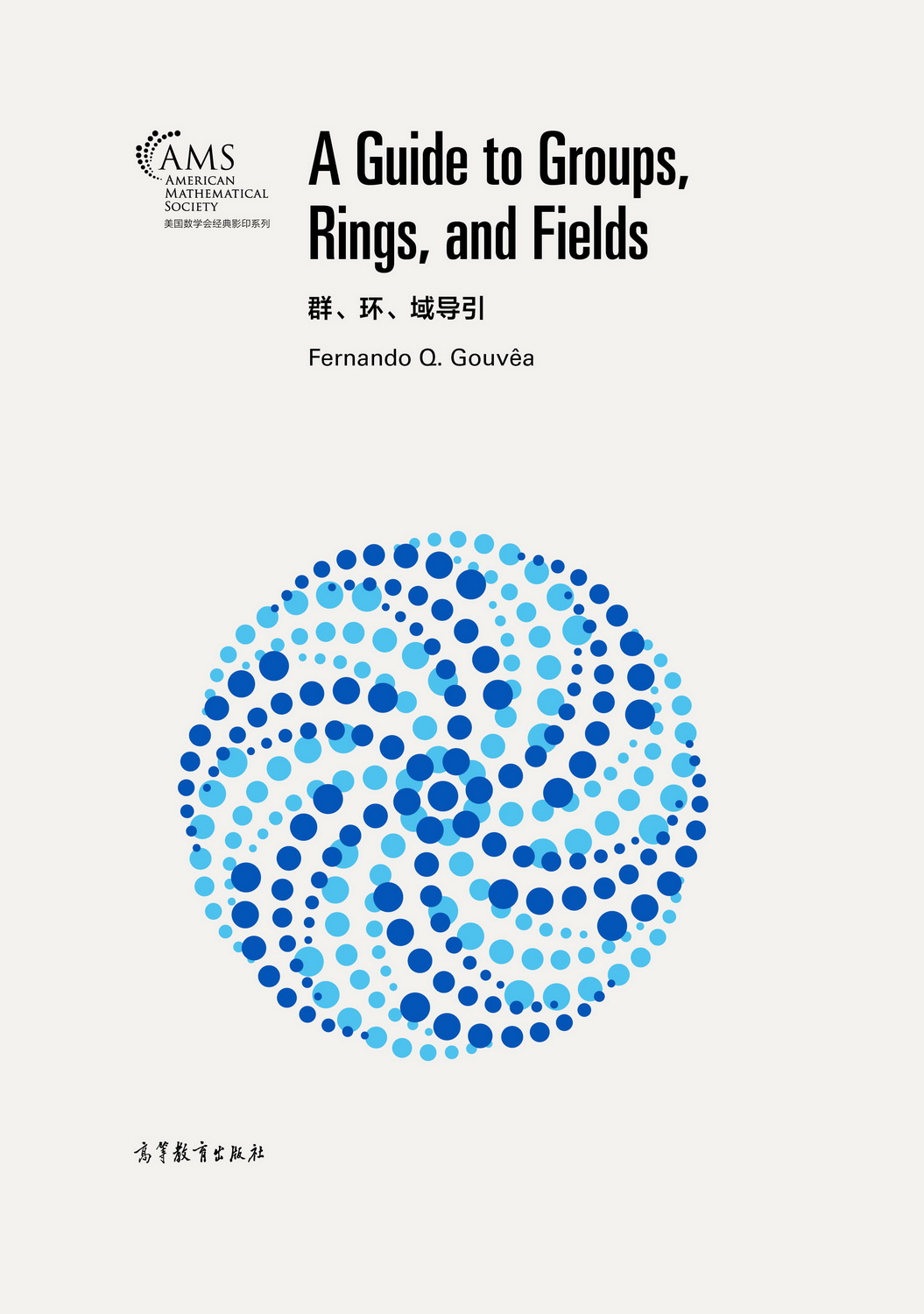有机化学实验( Organic Chemistry Experiments)
作者: 王梅 王艳华 高占先编
出版时间:2011-12-02
出版社:高等教育出版社
- 高等教育出版社
- 9787040300932
- 1
- 76254
- 0045152916-8
- 平装
- 16开
- 2011-12-02
- 370
- 235
- 理学
- 化学
This book is compiled on the basis of "Organic Chemistry Experiments" (fourth edition, edited by Zhanxian Gao) and with combination ofthe bilingual teaching experience.
The book encompasses six sections: introduction, basic techniques for organic experiments, basic preparation experiments of organic compounds,comprehensive experiments, self-designing experiments, and investigative experiments. Tables of commonly used data, index, and the Chinese-English professional glossary are attached to the end ofthe book.
The book was written with emphasis on (1) basic techniques for organic experiments, including some advanced experimental techniques such as microwave reactions and the resolution of racemates; (2) common scale and miniscale experiments, also taking account of semimicro- and microscale experiments;(3) traditional and representative organic reactions, meanwhile,introducing the concept of "green" synthesis; and (4) training students in basic experimental skills, including developing their ability in experimental design and scientific research as well.
This book can be used as a textbook for the bilingual course of organic chemistry experiments. It can also be used as a teaching reference book for the experiment courses of other related majors.
Chapter 1 Introduction
1.1 General Rules for Organic Chemistry Laboratory
1.2 Safe Laboratory Practice and First Aid in Case of an Accident
1.2.1 Prevention of Fires and First Aid in Case of a Fire
1.2.2 Prevention of Explosions
1.2.3 First Aid for Cuts and Scalds
1.2.4 Prevention of Damages from Hazardous Chemicals and First Aid for Chemical Burns
1.2.5 Toxicity and Safety Data of Chemicals
1.2.6 Disposal of Chemical Wastes
1.3 Information Sources for Experimental Organic Chemistry
1.3.1 Important Handbooks and Dictionaries
1.3.2 Important Journals Involving Organic Experiment
1.3.3 Important Online Resources
1.4 Common Glassware and Apparatus
1.4.1 Names and Uses of Common Glassware
1.4.2 Cleaning and Drying Glassware
1.4.3 Common Organic Lab Apparatus
1.4.4 Assembling and Disassembling Apparatus
1.5 Preparation and Notebook for the Laboratory
1.5.1 Laboratory Preparation Note
1.5.2 Experimental Record
1.5.3 Sample Calculation for Notebook Records
1.5.4 Laboratory Notebook Formats
1.5.5 Experimental Report
Chapter 2 Basic Techniques for Organic Experiments
2.1 Working on Glass Tubes
2.1.1 Cutting and Bending Glass Tubes
2.1.2 Stretching Glass Tubes
2.2 Weighing , Measuring and Transferring Reagents
2.2.1 Measuring and Transferring Liquids
2.2.2 Weighing Methods
2.3 Heating , Cooling and Stirring Methods
2.3.1 Heating Methods and Precautions
2.3.2 Cooling Methods and Coolants
2.3.3 Stirring Methods and Equipment
2.4 Extraction
2.4.1 Liquid‐Liquid Extraction
2.4.2 Liquid‐Solid Extraction
2.5 Drying and Drying Agents
2.5.1 Drying Organic Liquids
2.5.2 Drying Solids
2.6 Gas Traps
2.7 Separating and Purifying Liquid Compounds
2.7.1 Simple Distillation
2.7.2 Fractional Distillation
2.7.3 Vacuum Distillation
2.7.4 Steam Distillation
2.8 Separating and Purifying Solid Compounds
2.8.1 Filtration Apparatus and Techniques
2.8.2 Centrifugation and Decanting Solutions
2.8.3 Evaporating Solvents
2.8.4 Decolorizing Carbon
2.8.5 Recrystallization
2.8.6 Sublimation
2.9 Chromatography
2.9.1 Column Chromatography
2.9.2 Thin‐Layer Chromatography (TLC)
2.9.3 Gas Chromatography (GC)
2.9.4 High‐Performance Liquid Chromatography (HPLC)
2.10 Measuring Physical Constants of Organic Compounds
2.10.1 Melting Point
2.10.2 Boiling Point
2.10.3 Refractive Index
2.10.4 Optical Rotation and Specific Rotation
2.10.5 Relative Density
2.11 Spectroscopic Identification of Organic Compounds
2.11.1 Infrared (IR) Spectroscopy
2.11.2 Nuclear Magnetic Resonance (NMR) Spectroscopy
2.11.3 Ultra‐Violet‐Visible (UV‐Vis) Spectroscopy
2.12 Manipulation Techniques for Air‐Sensitive Compounds
2.12.1 General Introduction
2.12.2 Basic Techniques for Handling Air‐Sensitive Compounds
Chapter 3 Basic Experiments
3.1 Simple and Fractional Distillations : Separation of a Cyclohexane‐Toluene Mixture(环己烷甲苯混合物)
3.2 Intramolecular Dehydration of Alcohols : Preparation of Cyclohexene (环己烯)
3.3 Intermolecular Dehydration of Alcohols : Preparation of Dibutyl Ether (正丁醚)
3.4 The SN 2 Reaction : Preparation of 1 Bromobutane (1 溴丁烷)
3.5 Decarboxylation of Dicarboxylic Acids : Preparation of Cyclopentanone (环戊酮)
3.6 Oxidation of Secondary Alcohols to Ketones : Preparation of Cyclohexanone(环己酮)
3.7 Oxidation of Primary Alcohols to Aldehydes : Preparation of Benzaldehyde(苯甲醛)
3.8 Fischer Esterification of Carboxylic Acids : n Butyl Acetate (乙酸正丁酯)
3.9 Acetylation of Salicylic Acid : Preparation of Acetylsalicylic Acid (乙酰水杨酸)
3.10 Amidation of Carboxylic Acids : Preparation of Acetanilide (乙酰苯胺)
3.11 Friedel‐Crafts Reaction : Preparation of Acetophenone (苯乙酮)
3.12 The Claisen Ester Condensation : Preparation of Ethyl Acetoacetate(乙酰乙酸乙酯)
3.13 Perkin Condensation : Preparation of Cinnamic Acid (肉桂酸)
3.14 Cannizzaro Reaction : Preparation of Benzyl Alcohol (苯甲醇) and Benzoic Acid(苯甲酸)
3.15 Carbene Additions with Phase‐Transfer Catalysis : Preparation of 7 ,7‐Dichlorobicyclo[4.1.0]heptane (7 ,7 二氯双环[4.1.0]庚烷)
3.16 Nitration Reaction : Preparation of p‐Nitroaniline (对硝基苯胺)
3.17 Skraup Reaction : Preparation of Quinoline (喹啉)
3.18 Electrochemical Synthesis : Preparation of Iodoform (碘仿)
3.19 Extraction : Isolation of Caffeine from Tea Leaves
3.20 Thin‐Layer and Column Chromatography : Isolation of a Red Pigment from RedChilli
Chapter 4 Comprehensive Experiments
4.1 Preparation of 5‐n‐Butylmalonyl Urea (5‐n‐Butylbarbituric Acid ,正丁基巴比妥酸)
4.2 Diels‐Alder Reaction : Microwave‐Assisted Preparation of 9 ,10‐Dihydroanthracene‐9 ,10‐ α, β‐Succinic Anhydride (9 ,10 二氢蒽9 ,10 α, β 丁二酸酐)
4.3 Grignard Reaction : Preparation of Methyl Triphenylmethyl Ether(甲基三苯甲基醚)
4.4 Organometallic Chemistry : Preparation of n‐Butyllithium (正丁基锂)and Titration of its Concentration
Chapter 5 Self‐Designing Experiments
5.1 Identification of Functional Compounds
5.2 Microwave‐Assisted Preparation of Acetaminophenol (醋氨酚)
Chapter 6 Investigative Experiments
6.1 Studies on Synthetic Conditions for Preparation of Isopentyl Acetate(乙酸异戊酯)
6.2 Preparation of α‐and β‐D‐Glucose Pentaacetates (五乙酸葡萄糖酯)
6.3 Preparation of 9 ,9‐Bis(methoxymethyl)fluorene (9 ,9‐双(甲氧基甲基)芴)
6.4 Preparation and Resolution of Racemic 1 ,1′‐Bi‐2‐naphthol (1 ,1′ 联2 萘酚)
References
Appendix
Index
Vocabulary
Periodic Table of the Elements

